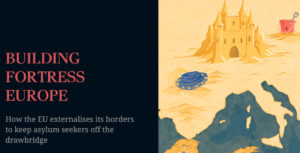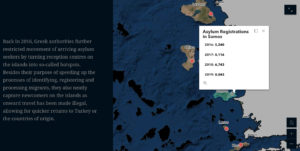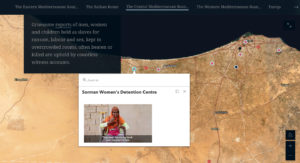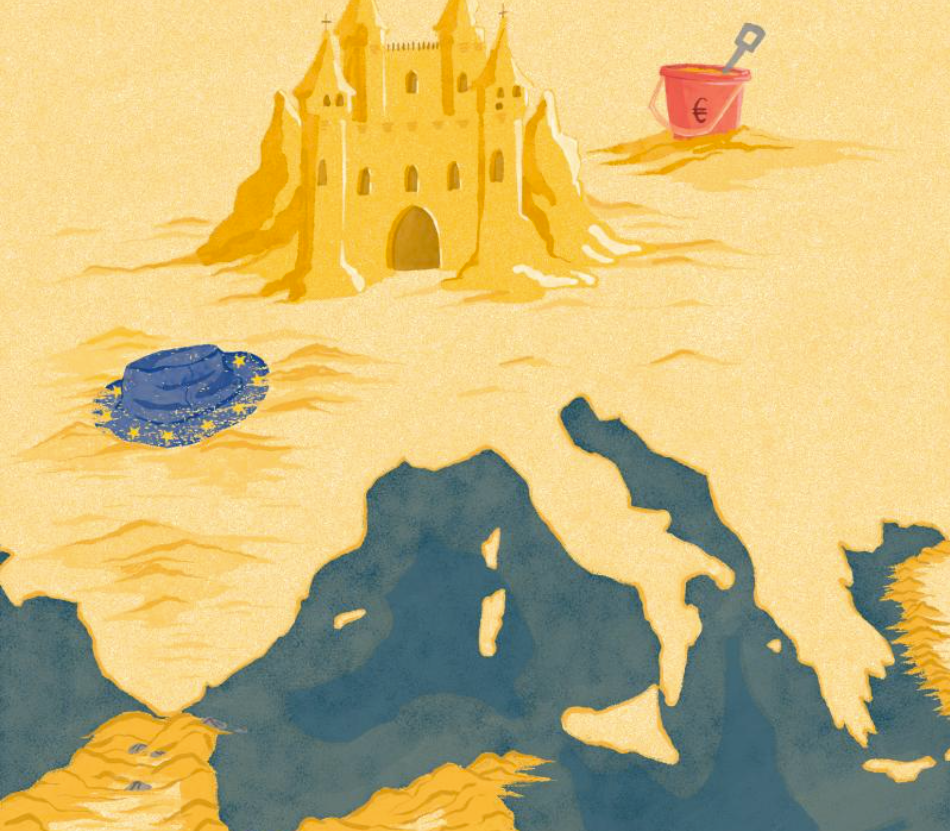One does not have to be an expert to know that the public debate around ‘irregular’ migration to Europe is highly polarised. Asylum seekers reaching Mediterranean shores or crossing land borders have become one-dimensional opposites: They are criminals, victims, aliens, subjects of humanitarian crisis, terrorists. Real challenges of managing migration, such as safe reception and fair redistribution of migrants to other regions or countries are overshadowed by emotionally charged questions of cultural identity and economic impact.
Accounts given by migration experts and of course migrants themselves hold the power to refute common misrepresentations, defuse dialectic arguments and emancipate migrants from their assigned pigeonholes. Researchers further identify migratory patterns and highlight situations of urgency, making them crucial to the public conversation. There is, however, one problem: The complexity of migration does not exactly make for attractive stories.
Outside of the academic bubble, the prevalent narratives around migrants and their arrival to the EU are hard to compete with. Racial and cultural stereotyping or categorical victimisation create simple contrasts and emotional imperatives to either expel or support. All the more difficult it becomes for experts, as they grapple with overly academic language and complex arguments. Additionally, public background knowledge varies greatly and experts need to incorporate geopolitical contexts and histories, making their accounts even harder to digest. If they want to make their voices heard in this clamour, they need to radically expand their tool kits and forge alliances with non-academic sectors, so that messages resonate well beyond their echo chambers.
For me, this realisation came in 2018 when researching immigration trends to Europe. I wanted to paint a comprehensive and data-based picture of the EU’s migrant deterrence and border externalisation strategies, but not only for others in the field. Quickly I came to understand that a purely written account of this size cannot be both detailed and simple. It needs visual elements to break up the text-centred structure and create interactive experiences for a broader audience.
Designing interfaces through which readers engage with a story is both exciting for its creative potential and challenging for those who are not trained in such work. One solution for migration experts should therefore be to collaborate with the creative sector’s various branches, depending on the product in mind. So did the UK-based activist group Refugee Tales, who bring together asylum seekers and writers and publish the resulting stories in volumes.
Sitara Thalia Ambrosio and Iván Furlan Cano are a Germany-based photo journalist team. They created a visual journey through the daily hardships as experienced by migrants stuck in Bosnia, interweaving personal histories with context on how this situation is a result of anti-migrant politics.
Interactive maps became a guiding element of the narrative I had in mind for my project, so I advertised it in various geographic information system (GIS) forums and eventually began working with a US-based cartographer and map designer. The outcome of this collaboration is Building Fortress Europe, a map-centred story on the EU’s border politics, which also incorporates infographics, photos and videos (www.buildingfortresseurope.com).
Although the story maintains a substantial body of text, interactive maps serve as sign posts along the main routes to Europe. They allow the reader to explore temporal data and compare trends across regions and countries over time.
 We consulted a graphic designer to create data visualisations, which were then embedded in various maps and paragraphs. A colour theme was decided on to create seamless transitions from passage to passage and make the experience more immersive. Despite the continuous scrolling, the app design still allows the reader to navigate between chapters and follow up sources, as they are hyperlinked throughout.
We consulted a graphic designer to create data visualisations, which were then embedded in various maps and paragraphs. A colour theme was decided on to create seamless transitions from passage to passage and make the experience more immersive. Despite the continuous scrolling, the app design still allows the reader to navigate between chapters and follow up sources, as they are hyperlinked throughout.
Data can tell us a lot about the broader picture, but only testimonies make readers relate to the story’s subjects on a personal level. They give a sense of migrant realities as lived experiences and shine light on what happens where no press and humanitarian organisations reach. This became especially important for our chapter on detention in Libya. As some organisations were able to conduct interviews with those held in Libyan detention centres, we incorporated them within a map. Here, readers can select a centre and view footage taken on the inside, which many feel is the most emotional part of the story. Here, visual media can convey what academic writing is not suitable for.
 The possibilities of telling stories about migration, or any other area of interest, have expanded and become increasingly accessible, opening doors for a public involvement of experts beyond social media and outlets of popular science. Producing custom digital content however remains a craft that comes with its price tag, which often poses a problem for researchers and activists with no prior training in such content creation. Normalising the curation of academic content in non-traditional forms should therefore be supported by academic institutions, as to encourage the development of more affordable tools for communicating messages beyond the academic bubble.
The possibilities of telling stories about migration, or any other area of interest, have expanded and become increasingly accessible, opening doors for a public involvement of experts beyond social media and outlets of popular science. Producing custom digital content however remains a craft that comes with its price tag, which often poses a problem for researchers and activists with no prior training in such content creation. Normalising the curation of academic content in non-traditional forms should therefore be supported by academic institutions, as to encourage the development of more affordable tools for communicating messages beyond the academic bubble.
About the author: Johannes Walter is the creator of the web-based story map Building Fortress Europe and works in the reintegration of voluntary returnees from Germany. He also volunteers in an asylum reception centre. Johannes graduated in Anthropology (BSc) from the University of Kent.
